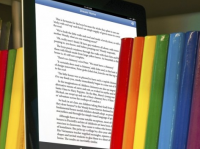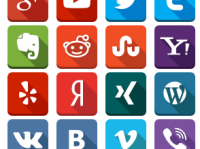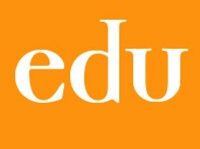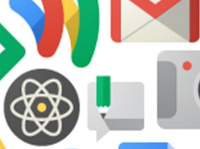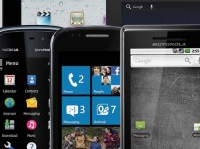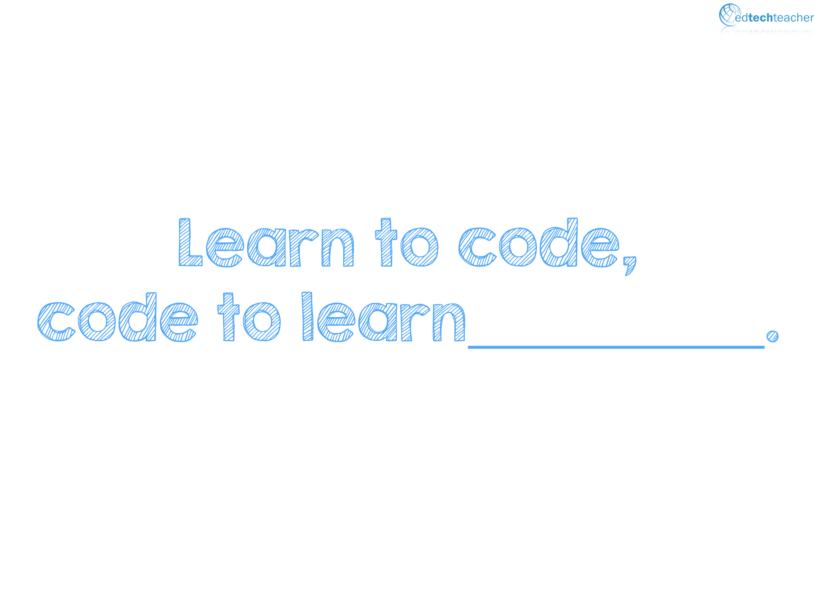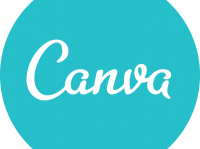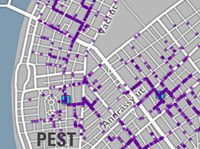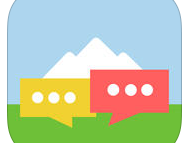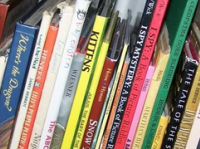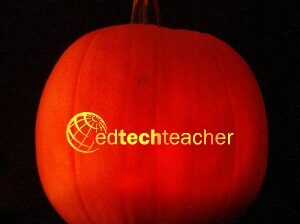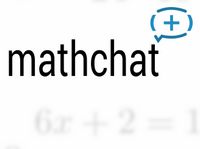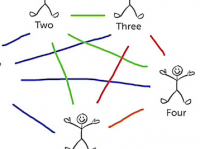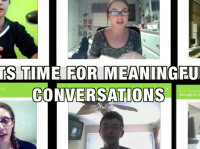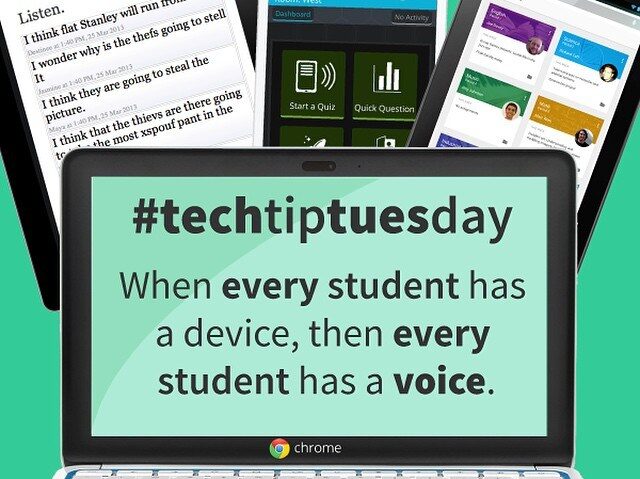The EdTechTeacher Blog
EdTech Resources & Strategies for Teachers
Subscribe to receive updates on our newest blog posts and resources!

- All
- Blog
- Featured
- Project Based Learning
This guest post from iPad Summit San Diego presenter, Kenneth Frank (@MrFrankKMHS), first appeared on EdTechResearcher. Like most teachers in 1:1 environments, my use of technology has evolved from direct challenges posed by my students, administrators, and fellow faculty. I didn’t set out to author a single textbook, let alone find myself coordinating the creation of approximately sixty digital texts over the next three years; however, this is where technology has led me. The “why” of this story is just as important as the “how,” so I will try to outline both our reasons for adopting teacher-created resources in our…
[View the story “Weekly Resources for MLK Weekend” on Storify]
This guest post from iPad Summit San Diego presenter, Nik Chatzopoulos (@chatzopoulosn), first appeared on Daily Genius. One of the most fascinating ways to create an eBook is using a mobile device, particularly, an iPad. StoryKit, Book Writer, and Book Creator are 3 apps my students have used to create some highly interactive, professionally looking eBooks. All three apps are excellent examples of tools that allow students to unleash their creativity and tell their own stories. StoryKit (free) StoryKit is a user-friendly free app that allows students to create eBooks with text, pictures, sound recordings, and drawings. The app allows…
This post appeared on Patrick Larkin’s blog – Learning in Burlington. It’s no secret that I’m a huge fan of social media as a tool for learning. In order to stay on top of the various conversations that I like to follow, I have a number of lists that I have created. These various streams sometimes lead me to inappropriate posts by students. These instances concern me as to the amount of guidance that these students are being given in regards to the things that they post online and the possible ramifications. As an educator, I feel it is the…
This guest post from iPad Summit San Diego Presenter Jodie Deinhammer (@jdeinhammer) first appeared on Daily Genius. When I first heard about iTunes U, I was unsure of how it all worked or how it would fit into my classroom. Today, I cannot imagine teaching without it. iTunes U is a free app that allows teachers to put all course materials, iBooks, apps, and links to submit work in one place for students to access. So instead of a website for my class, students subscribe to my iTunes U course. Once subscribed from their iPads, students have access to all…
This is a guest post from San Diego iPad Summit presenter, Cheryl Davis (@digitalteacher). Let’s go – out and about with mobile technologies! We often acknowledge that a benefit of technology is that it can provide our students with the ability to go beyond the walls of the classroom to explore virtually the world. And as school technology becomes increasingly mobile, we are also seeing the benefits of how “taking technology along” can enhance real time field trips and involve students in real world participatory learning. Taking students to “the place” with mobiles in hand – whether it be a visit…
[View the story “Weekly Resources to Kick Off the New Year!” on Storify]
This post first appeared on Edutopia. Agile development refers to an iterative and highly collaborative approach to creating a product. In comparison, an agile classroom is an environment in which your students are motivated to do their best work and feel invested in the class as a whole. Before I started teaching at Punahou School in Honolulu, Hawaii, I was a developer at a startup. We see our own teaching though the lens of our unique experiences, so here are some of the things I learned as an entrepreneur back then that make me a better teacher now. Have a Vision…
February 4th: The video above will be a LIVE STREAM of the webinar. This webinar is broadcasted for free using Google Hangouts on Air. Press play or refresh if the video doesn’t begin at the indicated time. Please introduce yourself in the chat window below and feel free to ask questions at anytime. Please contact us at [email protected] if you cant embed the chatbox Please contact us at [email protected] if you cant embed the chatbox
This post first appeared on The Daily Genius. One of the most powerful ways that administrators can encourage their faculty to adopt new technologies in their classroom and curriculum is by modeling effective application of new digital tools. With Google Apps for Education, there are many tools that are helpful for administrative tasks, providing a number of ways to effectively model technology usage on a daily basis. Create a Shared Google Doc for Faculty Meetings Use Google Docs to create and share meeting agendas. Not only will it prep your faculty for meetings, but they can use the document to…
January 28: 9pm EST / 6pm PST Mobile devices have changed the face of teaching and learning in the classroom and are redefining the future of “work.” From digital note taking to digital professionalism, our panel of guests will share how they are transitioning higher education from the 20th to the 21st century. Speakers: Justin Reich, Dean Florez, Sabba Quidwai, and Warren Weichmann
Whether you are facing the requirements of Common Core, AP curriculum, or state-specific tests, iPads, Chromebooks, and other mobile devices can play an incredible role in helping your students to become problem solvers, critical thinkers, and successful learners while also preparing for these tests. Find out how as Beth Holland hosts three incredible educators in this webinar. Speakers: Beth Holland, Shawn McCusker, Jodie Deinhammer (@jdeinhammer), Lawrence Reiff (@mrreiff)
January 6 (USA)/ January 7 (Australia) 8pm EST (GMT-5)/ 5pm PST/ 11am (GMT +10) How do we integrate iPads in a truly meaningful way that promotes creativity and enhances learning? Come join us as Beth Holland moderates a conversation with Paul Hamilton – educator, author, and Apple Distinguished Educator from Brisbane, Australia, and Rabbi Michael Cohen – Ed Tech Director, Doctoral Candidate, and Google Educator. Speakers: Beth Holland, Paul Hamilton (@PaulHamilton8), and Michael Cohen (@TheTechRabbi)
[View the story “EdTechTeacher’s Best of 2014!” on Storify]
This post first appeared on Daily Genius. When adopting technology in the classroom, one of the key concerns for educators is classroom management. Often, they believe that with devices come three options: Ban devices outright (Good luck!) Lock them down Open your classroom up to the Wild Wild West! However, I have found that many traditional methods of classroom management readily translate to a technologically rich curriculum – with some modification. Restructure the Classroom Most of us teach in “traditionally” structured classrooms – the teacher is in front and the students sit in rows looking at the teacher. However, this is…
This post first appeared on Free Technology for Teachers. iPads have entered classrooms at an unprecedented rate. In response to the prevalence of this device in schools, Apple has released a series of free eBooks outlining lesson plans for various apps. What makes these especially powerful is that they harness iPad’s unique feature of being a mobile creation device. All of the eBooks are free and the apps, if not free, are heavily discounted under Apple’s Volume Purchase Program for Educational Institutions. Each of these eBooks focuses on a specific app and outlines a series of lesson plan ideas by…
[“Weekly Resources for the Middle of Decemeber” curated using Storify]
Come Join Us!Google is partnering with EdTechTeacher to bring you a unique educational opportunity! Join us at Google Boston Headquarters on February 27th for ignitekeynotes, hands-on sessions, Google Headquarters tours, and paneldiscussions. Don’t miss this chance to connect with innovators in education and technology! REGISTRATION IS FREE! EdTechTeacher Google Jamboree is limited to 200 attendees. Please fill out the application form below by January 7th and tell us how you will make 2015 the best year for student learning! We are looking for motivated teachers andleaders to join the ETT Google Jamboree. We hope it will be you so APPLY TODAY! Learn More
This guest post from Lisa Johnson (@TechChef4U) first appeared on Free Technology for Teachers. By now, many of you may know about Canva – the wildly popular design tool. Canva has truly transformed itself to be a leader in image and graphic design with its easy drag and drop platform and robust array of templates. How could Canva get any better, you ask? Well, Canva just launched public profiles so I decided to nab my profile and begin customizing. Users can select designs that they would like to make public and tag each design to be optimally searched. Applications for…
This post first appeared on Free Technology for Teachers. Stanford University’s Spatial History Project is a community that combines humanities research with “spatial, textual and visual analysis.” On their about page, they explain that as scholars, they realize the significance and importance of displaying information within a spatial context. Too often, history is presented chronologically but a visual can provide learners with valuable context to help them make connections to a broader context. The Spatial History Project is an amazing collection of interactive maps that explore ancient and modern societies, cultural practices, expansion, environmental impact, and more. Students could delve…
December 9th 6pm EST Join us, the creator of BookCreator – Dan Amos, and the winners of the AppSmash Awards – Elizabeth Glassman & Nik Chatzopoulos, to learn how you can use eBooks to enhance teaching and learning. Speakers: Beth Holland, Sabba Quidwai, Dan Amos (Creator of Book Creator), Elizabeth Glassman (High School Biology Teacher) & Nik Chatzopoulos (4th Grade Teacher). Chat Transcript: PDF of Chat Transcript
[View the story “Weekly Resources for the first week of December” on Storify]
December 3rd 2014 6PM EST Anybody can learn to code! The Hour of Code is an initiative by Code.org to bring coding to every classroom during Computer Science Education week (December 8th-15th). If you are looking for a place to start, we have brought together a team of experts from around the globe to provide you with ideas ahout how you can participate. Speakers: Kate Wilson, Maggie Keeler, and Franklin Onuoha (South Boston Computer Clubhouse Coordinator)
This post first appeared on eSchool News. Putting iPads in the service of learning, in our view, means putting technology in the service of preparing students to solve unstructured problems and communicate persuasively and with deep understanding. That’s our vision of what great schools do. As we approach the challenge of creating powerful learning environments with iPads, we use five bedrock principles to keep us grounded: Technology must be in the service of learning. Without a clear vision for learning, technology is the engine of a ship without a compass. Tablets are not computers. There are some things they do…
This post first appeared on Free Technology for Teachers. After a few months with iPads in my classroom, the experience that I began to cherish the most with my students was the creative process that began with storyboarding. It was during this process that deep critical thinking, analysis, evaluation and other higher order thinking skills were being challenged, enhanced and developed. Through these conversations, students were able to ask questions and have conversations about what should and shouldn’t be included in the final product and why. Simultaneously, it was through this process that I became the facilitator in the classroom.…
[View the story “Weekly Resources from #ettipad Boston” on Storify]
This post first appeared on Edutopia. Too often we look for a single solution when it comes to technology, yet our needs constantly evolve. Additionally, the apps and programs continually change. We each have personal preferences and methods, and on top of that, our students have different learning needs. Recently, I’ve found myself offering choices that would serve a purpose rather than teaching a specific tool. For example, teachers looking to curate web content might choose Evernote, Diigo, Pinterest, or Padlet. As long as their content can be saved, searched, and shared, they can choose the tool that they prefer.…
This post first appeared on Jen Carey’s blog Indiana Jen Day two of the iPad Summit starts with a Keynote talk by Greg Kulowiec (@gregkulowiec), entitled Plato, Paper & iPads… As someone who has read Plato in the original Greek, I’m curious where he’s going here. I have known Greg for years and seen him present some amazing workshops and talks, so I am excited to see him present. Greg tells us that this morning, he is going to tell us his story. Greg started teaching in 2005 at Plymouth South High School. When he started, he was wholly on the analogue side…
This guest post from iPad Summit Boston presenter, Sean Sweeney (@SpeechTechie), first appeared on Daily Genius. Context has always been my passion as an educator, and it is my belief that students learn best when specific skills are targeted in context. There are a variety of modes from which we choose relevant contexts as educators—curriculum topics, shared reading, or even social contexts in the classroom – and these can set the stage to build language and literacy skills with a variety of continuously engaging tools, two simple ones being picture books and apps! Over the years, I have developed a…
This post first appeared on Jen’s blog. My last session of the day is “Social Media is Learning Media” by Patrick Larkin. I have seen Patrick’s work at iPad Summits for years and I’m excited to see him present again. I’m always excited to see administrators talk about Social Media in a positive, empowering way. Patrick talks about the power of Social Media in his own career. When he was building technology programs at Burlington High School, there were not a lot of people doing similar work in Massachusetts or even the Northeast. Using Social Media enabled him to connect…
This post first appeared on Jen’s blog. I’m excited to attend this next session “Metamorphosis of the Biology Textbook” with Morgan Ryan and Gaël McGill, Ph.D., co-creators of E.O. Wilson’s Life on Earth, a new textbook created via iBooks Author and available on the iBooks bookstore (free). The vision of the project was to create a series of vibrant textbooks in a new, media platform. The textbook is a standard Biology textbook, 41 chapters across 7 volumes. They wanted it to be standards based and familiar, but at the same time different than what people have seen before. Morgan tells…
This post first appeared on Jen’s blog. The next session I’m attending is “The Power of Screen Time! Reading, Writing, & Devices” by Beth Holland. I’m excited for this presentation because I helped Beth edit and revise her Edutopia piece, “The 4Ss of Notetaking with Technology.” There is a common theme in research, articles, and newspapers on “devices” being bad for “x activity.” However, as Beth says, it’s not the device! It’s what we or are students are doing. She also said that we’re not going to talk about “going paperless” because, as Shawn McCusker says, “Paperless is a bureaucratic…
The value of lab notebooks is that it empowers students to become critical thinkers and start asking WHY. Maggie Keeler (@mskeeler) leads off with the thinking – how do we get students to start inferring, drawing connections, indicating their understanding, and building literacy. Lab notebooks allow for both procedural as well as descriptive writing – providing students with a choice for how they choose to communicate their understanding. Because lab notebooks make student learning visible, it provides great opportunities for differentiation: bright students can be enriched as you ask more probing questions and encourage them to go deeper while struggling…
Debbie Carona (@DebbieCarona) began her session by showing a number of videos of student work. Once we all had an idea of what may be possible with regard to student learning, she began walking us through the process. THE HOOK Debbie begins by explaining that great PBL projects begin with Entry Events or a “Hook.” This could be anything from a video to a challenge from the Head Master or a video conference with an expert. It doesn’t have to be anything big, it just has to grab the students’ attention so that they can start to make good inquiries.…
This post first appeared on Jennifer’s blog. As a technology administrator, I’m excited to attend my next session “Redesigning Professional Development: How to slay the sit and get Dragon!” with Jonathan Werner. You can view his slides here. Providing meaningful professional development that brings quality educators into the modern world is always a challenging task. Jonathan is an amazing tech guru and I’m excited to be here and learn from him. Jonathan starts it out with a video from a “traditional” classroom where a teacher speaks at the front of the room and students reiterate what she is saying. Whoa……
This post first appeared on Jennifer Carey’s blog. The next session I’m attending is Shakespeare through a new lense with James Lucas and Jessica North Macie from the National Cathedral School. You can view the presentation materials here. I’m excited to hear more about teaching Shakespeare using 21st century tools. I’m live blogging this session so please excuse typos and errors! Jessica tells us that the course is a combination of textual analysis in conjunction with film analysis. So why did they do this as a video project? Shakespeare works best “on its feet” and we need to learn about…
This post first appeared on Jen’s blog. The iPad Summit Boston is finally here! I have been attending the iPad Summit since its beginning several years ago. This is one of my favorite ed tech conferences. The keynote speaker is Dr. Heidi Hayes Jacobs of Curriculum21. This blog is live, so please excuse any typos or inconsistent writing! It’s tricky to get it all down. Heidi’s work on building 21st century curricula is at the forefront of 21st century pedagogical and curricular development. I’m excited to hear her ideas. I’ve been following curriculum21 for years and been inspired by many…
This post originally appeared on Jen’s blog: Indian Jen: iPad Summit 2014 Boston – Dr. Heidi Hayes Jacobs The iPad Summit Boston is finally here! I have been attending the iPad Summit since its beginning several years ago. This is one of my favorite ed tech conferences. The keynote speaker isDr. Heidi Hayes Jacobs of Curriculum21. This blog is live, so please excuse any typos or inconsistent writing! It’s tricky to get it all down. Heidi’s work on building 21st century curricula is at the forefront of 21st century pedagogical and curricular development. I’m excited to hear her ideas. I’ve been followingcurriculum21…
Meghan Zigmond (@ZigZagsTech) teaches first grade in a public school near Corpus Christy, Texas. She has taught first grade for nine years. “Even if you are not an early childhood teacher, you will be able to get a lot out of today,” Meghan continues. She plans to address a number of apps and resources that can be used at all levels. To begin, Meghan shows that her presentation is actually created in Tackk. At the top of her screen, she shows an example of visual thinking in math. She sets up about how the focus is that the “The Tool…
This post first appeared on Free Technology for Teachers. Recently, while demonstrating to a Spanish class how to use Google Drive, I also showed them how to change the overall text to Spanish. By doing this, autocorrect would stop trying to change their text, and they would no longer have that annoying red line appearing under their writing. I then reminded them to switch the language back to English when they returned to working on other classes. A student (7th grader) quickly shot up his hand and taught me something new today about Google Docs. With the New Drive, not…
This post first appeared on Edutopia. Recently, a number of articles have surfaced reporting the ineffectiveness of note taking with laptops in keeping with the findings of Pam Mueller and Daniel Oppenheimer detailed in The Pen Is Mightier Than the Keyboard. These authors assert that when students used laptops in lecture courses, they transcribed notes rather than synthesized information. As a result, those students then performed poorly on cognitively demanding tasks. However, before making a blanket statement that one device may be better than another (e.g. pen vs. laptop) or calling into question what may be the best note-taking system,…
[View the story “Weekly Resources for Election Week” on Storify]
This post first appeared on Free Technology for Teachers. I spend way too much money on books! This year, I made a concerted effort to get more books from the library to help my budget. On my first visit to a local library, I learned that they used Overdrive to rent eBooks and audiobooks! So now, I can check out eBooks and audiobooks from home and read them on my iPad! Overdrive allows you to rent eBooks, Audiobooks, and even video straight from your local library! There are no fees associated with this service. All you need is a library…
This guest post from iPad Summit Presenter, Debbie Carona (@DebbieCarona), first appeared on Daily Genius. Though more than two years into my school’s implementation of project-based learning, yesterday, I found myself excited all over again. I was helping a second grade teacher enhance her landforms PBL by using Padlet as part of the KWL process and suddenly realized that this approach to student-centered learning has truly become a part of who we are as a school. My adventures in combining PBLs and iPads began with a gift of two carts. I had just started taking the PBLU online courses when…
This post from Maggie Keeler (@KeelerMS) first appeared on Free Technology for Teachers. Microscope work in science class is often a solitary endeavor. Traditionally, one student searches to find a seemingly invisible organism while patiently waiting for the teacher to come confirm that they’ve found it. Not anymore! With the MotiConnect App from Motic, this isolated experience becomes collaborative. MotiConnect allows you to connect up to six iPads wirelessly to a Moticam X camera or digital microscope with Moticam software. Each student is then able to capture images, record videos, annotate, and measure images from the microscope. The video below captures…
[View the story “Weekly Resources from EdTech Conferences” on Storify]
This post first appeared on Edutopia. Game designers understand how to make games memorable and “sticky” in the sense that, even when you aren’t playing the game, you’re still thinking about solving its problems and puzzles. As teachers, how might we make our projects and content as sticky as games? How can we engage kids in thoughtful learning even after they leave the classroom? Here are game designers’ top five secrets and some tips on using these same game dynamics to make learning in your classroom as addictive as gaming. 1. The Story Dynamic: Wrap Them Up in the Story…
[View the story “Weekly Resources for the Mid Fall” on Storify]
This post first appeared on eSchool News. “Could we in the United States create school cultures in which instructing colleagues on how they might improve performance is not a rare and emotion-laden event, but rather an accepted and valued mechanism in the development of desirable professional practice?” In his latest editorial, Tom Daccord recounts his experience in Singapore as an Outstanding Educator in Residence and then applies those observations and lessons-learned to the US education system. He challenges us to think about whether we could build a culture of constructive communication into our PD models. >> Read the full article on eSchool…
This guest post from Chris Williams (@modblog1) first appeared on Daily Genius. How can we use technology to transform learning outcomes for our children and young people? What really are the main benefits in the classroom, and what approaches should be avoided? The presence of technology in all aspects of society, from the home to the school and the office, often provides more questions than answers. It can’t be ignored, and all educators need a strong and clear understanding of how technology can (or can’t) support their work as well as its core purpose: teaching, learning and student progress. Collaboration…
This post first appeared on iPad Apps for Schools. iPads are powerful tools for teachers in the classroom. In addition to being robust, mobile creation devices for students, they help you to stay organized, be on top of your classes, create content and lessons, focus on continued learning, and build your PLN. Here are five ways to turn your iPad into a robust, education machine! Organize Yourself You can easily sync your Outlook or Google Calendar to your iPad by going to iPad Settings → Mail, Contacts, & Calendar → Add Account. This allows you to add multiple work, personal,…
[View the story “Weekly Resources for Columbus Day Weekend” on Storify]
This post first appeared on Free Technology for Teachers. Recently, I attended the EdSurge Summit in Los Angeles where I had the chance to take a first hand look at a great, new, FREE app called MathChat. We can all relate to a similar, enormous challenge while growing up: being stuck on a math problem with no one to help. As a result, we oftentimes turned to the back of the book. However turning to the back of the book only gave the solution, it didn’t help explain how to get there. MathChat helps to solve that problem! In that…
This is a guest post from Dr. Kristy Sailors (@BVEdTec), Director of Educational Technology, Blue Valley School District. Kristy will be presenting Apps are Free for a Reason at the November 13-14 Boston iPad Summit. Educators are challenged to identify mobile Apps that can be integrated into classroom instruction while expanding student knowledge, access and engagement. With the large number of Apps available, how do we determine which Apps are appropriate for student use? Who determines the “best” educational App lists? Where are the Apps reviewed and how can educators access those reviews? As we design digital-age learning experiences for…
This is a guest post from Norma Gordon (@normabgordon) at CueThink – one of our vendors for the November 13-14 iPad Summit in Boston. In 1960, George Polya, addressing inservice and preservice teachers, concluded with, “I have given you my ideas about how you should teach mathematics. There are the ideas of active learning, the priority of action and perception, and teaching by the activity of the kids to start them by letting them guess.” Fast forward to today: Teachers want to engage students in the Common Core Standards for Mathematical Practice, including sense-making, perseverance and constructing arguments and critiquing. Recommendations for how to…
This is a guest post from Richard Perry (@rperry209) and Julie Willcott (@WillcottJulie), iPad Summit Boston presenters. Don’t miss their session, Lights, Camera, Understanding: Making Use of Student Videos as an Assessment Tool, in November! Learn to leverage the built-in camera and inherent mobility of the iPad as a tool students can use to quickly and easily create videos. At the iPad Summit in Boston this November, we will demonstrate how these devices are engaging students with video as formative and summative assessments from their English and Science classrooms. This video provides a glimpse into the information that will be presented. Throughout the session, we…
This post first appeared on iPad Apps for School. iPads can be powerful devices in education – they are mobile, they are personalized, and they are intuitive. At the same time, sharing content between apps or devices can be a challenge. Fortunately, iPads in conjunction with Google Apps can create a powerful medium by which to input, edit, share, and publish multimedia content. Google Drive for Privacy and Security There are many different types of cloud computing solutions. However, the power of Google Drive with Google Apps for Education allows educators to protect the privacy of their students and comply…
[View the story “Weekly Resources for 1st week of October” on Storify]



